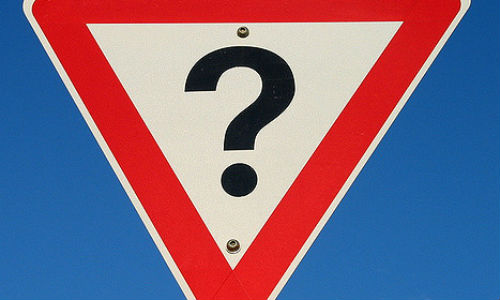Even the most precise writers are occasionally tripped up by punctuation. That’s particularly true nowadays, when newsrooms are lean and reporters are often expected to copy-edit their own work. This quick refresher on some of the most common punctuation errors should help.
Commas
There are tons of rules regarding commas. Some of the trickier ones, courtesy of the AP stylebook.
• Use commas to separate adjectives that are equal in rank. (If you could replace the comma with the word and, the adjectives are equal.) A long, complex report; an aging, rusty factory. But don’t use a comma when the last adjective before a noun is an integral element of a noun phrase. A talkative car salesperson. (The noun phrase is car salesperson.)
• Insert a comma before the concluding conjunction if an integral element of the series requires a conjunction. The CEO ate a hearty breakfast of orange juice, toast, and ham and eggs.
• Use commas after introductory clauses or phrases, but you can omit them after short introductory phrases, provided no confusion results. During the presentation he heard whispers and coughing.
• Use a comma to introduce a complete one-sentence quotation within a paragraph. John Smith said, “I’ve never had such a bumper year for business.”
• Avoid commas at the start of an indirect or partial quotation: Smith reports new clients are “coming in from all over.”
Em-dashes
Who doesn’t like dashes as emphasis techniques? Just consider the following guidelines:
• Note that em-dashes are more emphatic than commas. Use a dash instead of a comma when you want to strongly set off an idea.
• Dashes are often used to introduce an abrupt change of thought, while parentheses add information.
Upon firing the company’s non-salaried employees—and cancelling the company picnic—the CEO called a meeting with the board.
Upon firing the company’s non-salaried employees (a group of 500, according to recent records), the CEO called a meeting with the board.
• Unlike parentheses, remove other punctuation around dashes.
• Em-dashes are quite different from en-dashes, which are used to connect items in a series, such as “a Monday-Friday work week.” Think of an en-dash, which is shorter than an em-dash, as a substitute for “to.”
Exclamation points
Most style guidelines within the news industry recommend avoiding the exclamation point or severely limiting its use. Most editors feel that the exclamation mark risks your work reading like a marketing brochure vs. an unbiased piece of business news writing.
If you can’t avoid placing the mark within your writing, adhere to the following Associated Press guidelines:
• Place the mark inside quotation marks when it is part of a quote. “How amazing!” the board member exclaimed.
• Otherwise place a mark outside the quotation marks. The company’s annual report was longer than “Moby Dick”!
• Do not insert a comma or a period after the exclamation mark. “You’re wrong!” the irate shareholder shouted to the company’s chairman.
Parentheses
Quoting the Online Writing Lab at Purdue University, parentheses help set off important ideas not central to your topic, as an aside or to complete a clarifying idea. But where to punctuate these guys? Three small rules follow:
• The sentence should remain valid (and correct) even if you removed the parentheses.
• When a fragment in parentheses ends a sentence, put the period, question mark or exclamation mark outside the last parentheses (at least, try to).
• If the inserted idea is a complete sentence in itself, the punctuation remains inside. Could that business go under (really)? Or: That new venture could really outstrip its competitors. (It really could!)
Question marks
You would think that such a basic piece of punctation would be confusion-free. Not always.
• Use a question mark for an inserted/interrupting (also known as an interpolated) question. They said—am I understanding this properly?—to shut the facility down.
• Don’t use a question mark at the end of an indirect question. He asked who ordered the shut-down of the facility. Also don’t use at the end of some rhetorical questions. Why don’t we go.
• Use a question mark without a comma when attributing a quotation. “Why did the companies merge?” she asked.
Quotation marks
If you are writing for a U.S. audience, commas and periods always go within quotation marks. If you are writing for a British audience they go outside the quotation marks.
Semicolons
Often, the rules behind this small punctuation evade many writers during deadline crunch. These three short rules should help:
• Use a semicolon to relate two closely related independent clauses—meaning, a complete sentence. Apply this rule when connecting ideas without any linking words, or with conjunctive adverbs such as moreover, therefore or otherwise. North Carolina experienced record rain over Easter break; however, strawberry harvest remains bountiful, NC State officials say.
• Use semicolons to separate a series when the items are long or when individual segments contain material that also must be set off by commas, per the AP Stylebook. The company’s founder is survived by a son, John Smith, of Chicago; three daughters, Jane Smith, of Kansas, Mary Smith, of Denver, and Susan Smith, of Boston; and a sister, Lois Gilbert, of Raleigh, North Carolina.
• Place semicolons outside quotation marks.











